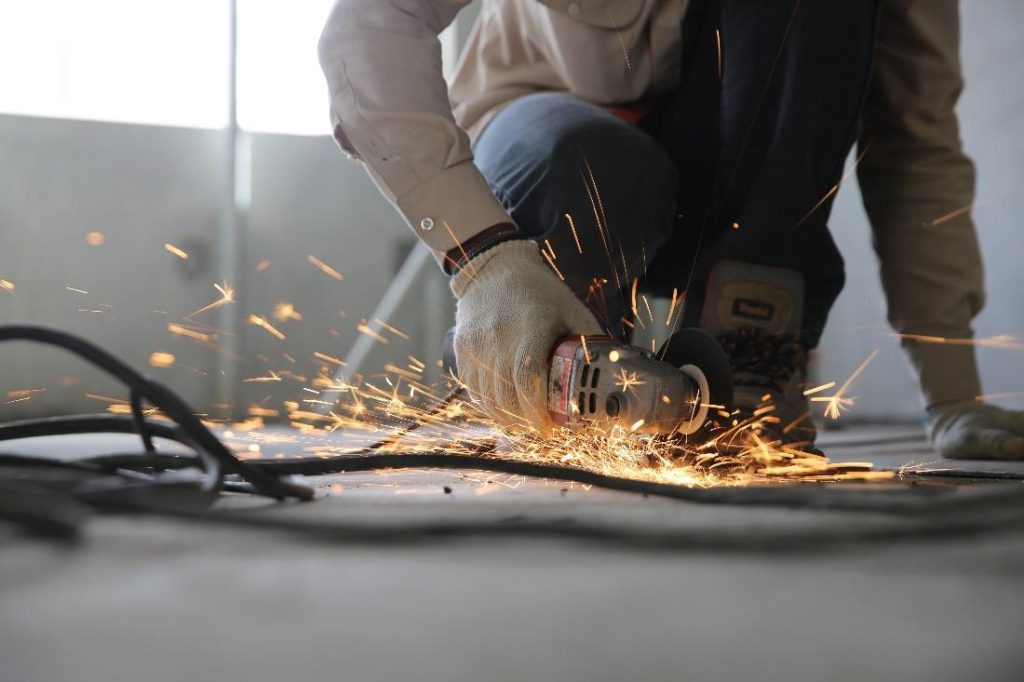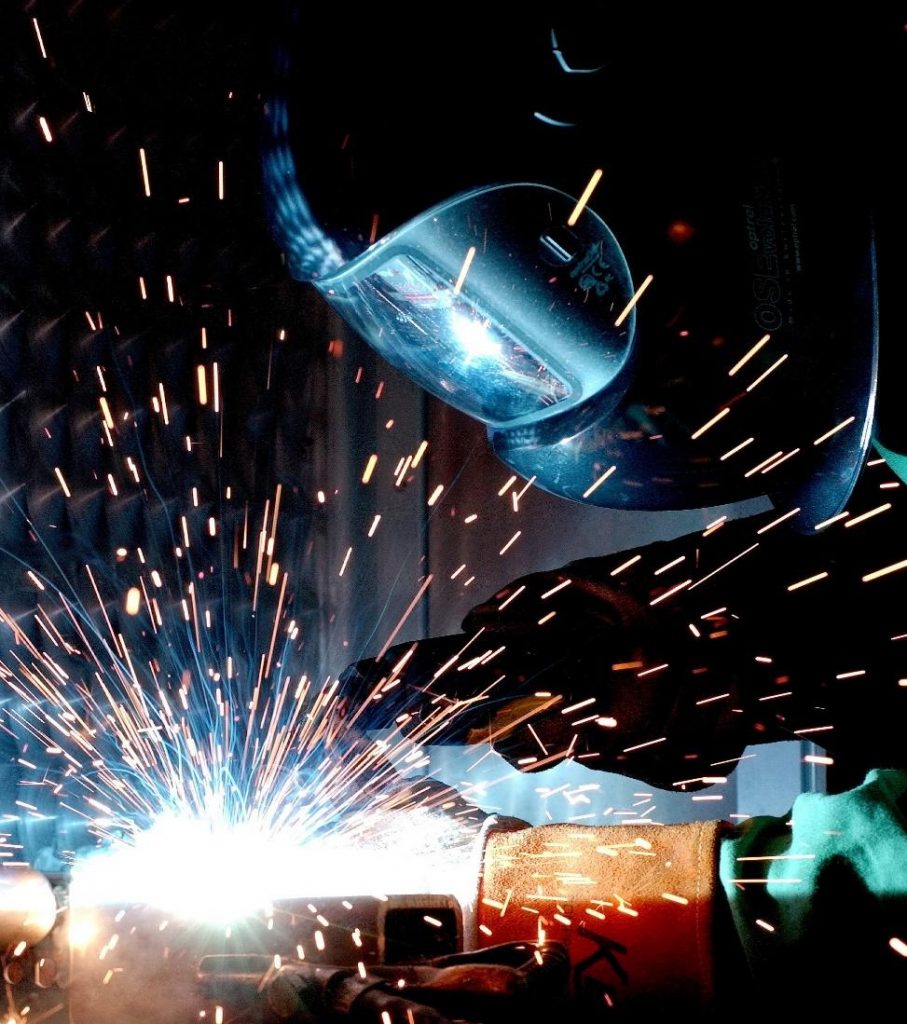5 Easy Steps to Improve Industrial Workplace Safety
Previously, we’ve covered how to stay safe in the corporate workplace. Today, we’ll take a look at working in a factory, electricity, or construction job, which bring their own safety challenges. Industrial jobs can be incredibly dangerous, and when people are working hard in loud, fast-paced environments, they can easily miss something dangerous until it’s too late.
Whether you’re a worker or a supervisor in construction, electricity, or manufacturing, staying safe on the job site is of the utmost importance. Below, we offer our industrial safety tips. We share how your workplace can reduce the likelihood of injuries and make your jobsite as safe as possible.
Communicate with co-workers
When it comes to familial, romantic, and friendship relationships, clear, effective communication is the key. The same goes for work relationships.
As a worker, you need to be clear with others about where you are and what you’re doing. This keeps everyone informed, and if you injure yourself, they can quickly help you. If you see something that may hurt somebody, talk with your supervisor.
If you’re a worker, know that your voice is important and that you can speak up. If you feel like your safety is at risk, or if you feel any doubt about your safety at any point during your project, again, contact your supervisor. If you don’t feel that he or she addresses the issue, don’t be afraid to speak to someone higher up the chain. Safety has to come before anything else.
A supervisor is legally required to keep their employees safe. Plus, employees will appreciate that their supervisors care about their well-being. If you’re a supervisor, you must set the example, show that industrial workplace safety is a top concern, and make sure everybody gets on board.
Provide everyone with adequate in-house training so that they’re familiar with general safety expectations. This training ensures that they learn about potential hazards, as well as about how to use equipment correctly.
Create an ongoing industrial workplace safety program that outlines fire safety procedures, lockout/tagout procedures, incident reporting, and more. The program should include both hands-on experiences and written information. If you’re managing a team of workers, don’t be afraid to ask for their feedback. You may even want to consider an incentive program, which motivates workers to adhere to your safety guidelines.
In addition to verbal communication, you can communicate to your workers in other ways. For example, you can put up clear posters throughout the facility and ensure that warning labels are easy to locate on equipment. These subtle reminders will help you keep safety at the forefront of workers’ minds.
Practice fall prevention
Slip-and-fall accidents are more common than you might think. There should be a specific fall management plan for every project where there’s a risk of falling.
If the crew must perform work at an elevated height, properly secure ladders. Employers should inspect the ladders before use every day. Furthermore, all elevated walkways and stairs should have guardrails.
In addition, report or clean chemical, oil, or water spills the moment you see them; liquids commonly cause slips and falls. In general, all pathways should be free of unnecessary items—in fact, these areas should already be clutter-free in case of emergencies. If they’re not, you’ll need to place equipment in designated areas in order to keep emergency exits, equipment shutoffs, stairways, and all other walkways clear. Also, be sure that these areas are labeled.
Perform regular maintenance on equipment
Your equipment should always run at optimal performance, so if it doesn’t, be sure that it’s repaired. Look out for warning signs that your machinery isn’t operating how it should, such as alarms, leaks, or strange noises. Malfunctioning or poorly maintained machinery is only a recipe for injury.
You should also perform regular checks—turn off all equipment and clean and inspect everything, ensuring that all machines are in good working order.
If machines have safety guards, make sure they’re undamaged; you should never remove or tamper with these protective mechanisms. Safety switches and electrical cords should be fully functional and left undamaged.
Provide protective clothing and accessories
You can’t skimp on jobsite protection. If you’re an employer, invest in comfortable clothing that protects your workers from chemicals, the elements, and so on. The proper protective equipment (PPE) you provide will act as a barrier between the worker and their environment. Educate your workers on error-free use of the provided equipment. If you’re a worker, always wear the clothing and gear that are intended for your specific duties. Accidents are more likely to happen if workers have improper equipment, so when you wear safety equipment, you reduce your risk for injury significantly.
Some examples of PPE include:
- Compact clothing—no billowing fabrics or jewelry
- Earplugs or earmuffs
- Full-face respirator masks
- Job-specific gloves that fit snugly—work gloves are underused
- Hard hats that are undamaged and fit correctly
- Safety glasses or face shields
- Safety harnesses (if workers need to perform tasks in an elevated location)
- Steel-toed boots and/or shoes that feature non-slip, puncture-resistant soles
Other industrial safety tips
- Every area of the factory or warehouse should be well lit; be sure your facility’s lights are working. Without adequate lighting, workers are unable to safely complete their work.
- Proper ventilation will keep fumes from reaching a toxic level and will reduce the risk of respiratory diseases and illnesses.
- Be sure that employees have easy access to a fire extinguisher and a properly-stocked first aid kit.
- Store materials, especially combustible materials, properly.
- Workers should only operate certain pieces of equipment if they’re authorized to do so.
- Whether you’re lifting heavy objects or standing at a machine, correct form and posture can help prevent overlooked injuries, such as back problems. Take advantage of mechanical devices, such as conveyor belts and forklifts, if necessary.
- Take short breaks if needed—conserve your energy and stay alert and fresh on the job.
Staying safe may take extra time and effort, but it’s absolutely worth it. If you’ve suffered a serious injury on the job, Travis Mayor will make sure you receive sufficient compensation for a workplace or construction accident. His number one priority is to understand each of his clients’ needs and fully support them. He has a long history of success, and he’ll fight until you win. Contact Mayor Law today for a free consultation.



